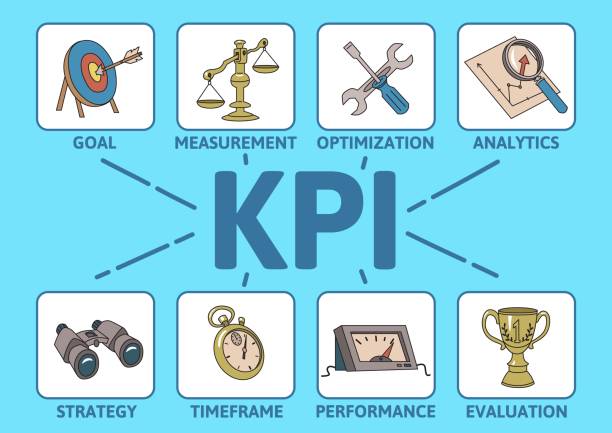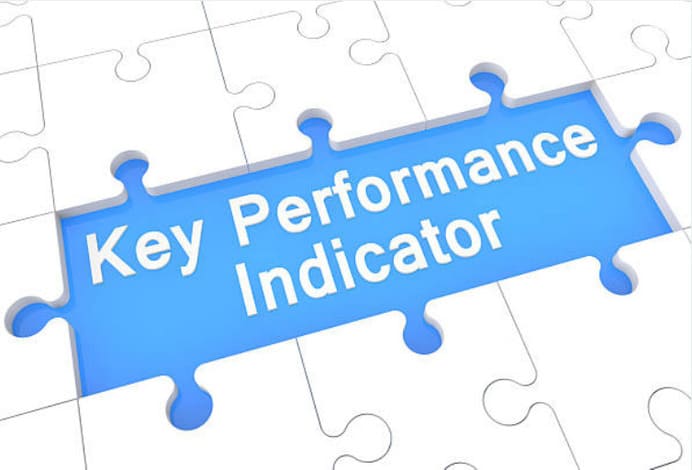Key Performance Indicators For Success
Understanding Key Performance Indicators

Understanding and using key performance indicators (KPIs) is essential for any business or individual aiming to track progress and make smarter decisions.
KPIs offer a clear way to measure success by evaluating specific aspects of projects or businesses, especially when it comes to internet marketing.
In today’s competitive landscape, relying solely on broad financial statements is no longer enough. Businesses need to break down their overall vision into concrete, measurable parts to truly grasp where improvements are needed.
Having Key Performance Indicators gives a clear snapshot of what’s working and what needs to improve, helping to focus on the goals that matter most.
If you’ve ever found it tricky to figure out whether your team or business is headed in the right direction, KPIs are pretty handy for clearing things up.
KPIs are used in companies of every size and industry. They support everyone from business owners to project managers in keeping tabs on performance.
If you want to stay organized, KPIs are hard to beat—they act as simple signals that show if you’re on the right path or need to adjust quickly.
This article outlines what Key Performance Indicators are, describes various types, explains why they matter, and offers best practices for applying them effectively in everyday business.
By tracking specific numbers such as revenue growth, customer satisfaction, and operational efficiency, organizations can identify strengths and areas needing a boost.
Moreover, Key Performance Indicators foster transparency and accountability as teams align around clear objectives.
This practice enables everyone to see how their work contributes to overall success, eliminating guesswork and guiding calculated decisions.
What Are Key Performance Indicators?
Key performance indicators are quantifiable values that measure how successfully an organization or individual is reaching defined objectives.
They break a broad vision into manageable, measurable parts, making it easier to track progress over time.
The primary role of KPIs is to answer fundamental questions such as, “How much revenue are we generating?” or “How effective are our operations?”
Each Key Performance Indicator should mirror a precise objective, whether in finance, customer satisfaction, or operational efficiency. Importantly, KPI’s do not follow a one-size-fits-all approach.
Key Performance Indicators must be carefully chosen to reflect the unique targets and strategy of each organization.
Over time, businesses have shifted from relying solely on general financial summaries to adopting clearly defined performance metrics that simplify decision-making.
Different Types of Key Performance Indicators
Key Performance Indicators come in various forms, each designed to track different aspects of business performance.
Financial KPIs, for example, cover revenue, profit margins, and return on investment, offering insight into fiscal health and the impact of strategic decisions.
Customer KPIs use metrics like satisfaction scores, retention rates, and net promoter scores to indicate how well client needs are met.
Process Key Performance Indicators monitor operational efficiency through measures such as on-time delivery and production cost.
Additionally, employee KPIs focus on workforce performance by examining turnover rates and productivity levels, while marketing KPIs evaluate engagement, conversion rates, and cost per lead.
Many organizations adopt a balanced scorecard approach, selecting a mix of indicators to create an all-in-one view of progress that covers financial, operational, and customer dimensions.
Importance of KPIs for Businesses
KPIs play a very important role in businesses of all sizes by offering clear, measurable data that informs decision-making.
When companies use Key Performance Indicators effectively, they gain an objective perspective that cuts through guesswork.
Instead of relying on assumptions, managers see real data that reveals successes and highlights areas needing improvement.
This clarity helps minimize risks by identifying issues early and guiding resource allocation when a switch in attention is required.
Moreover, KPIs align diverse teams around shared targets, fostering collaboration and accountability.
Regular reviews create a feedback loop that drives continuous improvement, smoothing the path toward operational enhancements and sustainable growth.
Best Practices for Using KPIs
Establishing effective Key Performance Indicators requires a careful, disciplined approach.
The first step is to define clear objectives that each KPI will support. When goals are specific, it is much easier to choose metrics that truly matter.
It is equally important to keep Key Performance Indicators simple and measurable; overly complex indicators can confuse rather than clarify.
Realistic targets should be set to encourage progress without overwhelming the team. Beyond the initial selection, KPIs need regular monitoring and updating to keep pace with changing market conditions.
Involving team members at every level ensures that everyone understands how their work impacts overall outcomes.
When expectations are set and progress is tracked routinely, a strong culture of accountability and ongoing improvement is established, making it easier to identify issues and adjust strategies quickly.
Clear Direction and Focus
Setting Key Performance Indicators means you are not just guessing about where to go next.
These indicators give a concrete frame of reference, so it’s easier for you and your team to stay focused on key objectives instead of getting distracted by less important tasks.
It streamlines everyday decisions by showing exactly which results matter the most at any given time.
In busy work environments, that kind of clarity cuts through the noise. You can now use your resources and energy on what truly moves the needle.

Better Decision Making
KPIs bring real data into the mix. Instead of relying on hunches or gut feelings, you can use measurable results to make smart choices.
If one area is lagging behind, the numbers let you adjust your strategy before a small problem grows. This approach saves time, money, and a lot of stress down the road.
In addition, having data-driven KPIs gives leaders more confidence about decisions, especially when there’s pressure to act fast or when multiple stakeholders are involved.
Increased Accountability
It’s much easier to hold yourself and others accountable when targets are crystal clear. KPIs spell out what’s expected, so there’s less confusion and fewer missed deadlines.
When you share KPIs with your team, everyone knows the goals, and it’s easy to see when you are off track, or when you’re nailing it.
This clear-cut accountability can boost morale and even help foster healthy competition within the group.
Tracking Progress Over Time
KPIs make tracking progress almost automatic. When I update these metrics at regular intervals, I can compare results, spot trends, and figure out if improvements are sticking.
This kind of ongoing feedback motivates me to keep making tweaks and encourages teams to celebrate real wins, not just busy work.
Over time, this consistent tracking also builds a valuable record that you can look back on to see just how far you’ve come.
Common Challenges When Working with KPIs
Despite their advantages, working with Key Performance Indicators can present certain challenges.
One major issue is choosing the right set of indicators; with so many potential metrics, companies can easily track too many numbers, which may cloud clarity.
Data quality is another concern—if the underlying information is inaccurate or outdated, even well-chosen KPIs can lead to misguided decisions.
Moreover, as markets evolve, Key Performance Indicators can lose relevance if not revisited periodically. A lack of context can also lead to misinterpretation of data, leaving teams uncertain about why targets are missed.
Overcoming these challenges involves focusing on quality over quantity, ensuring data accuracy, and regularly refining the indicators to keep them aligned with current business needs.
Motivation and Engagement
Nothing gets people going like seeing their hard work pay off. By sharing KPIs openly, you create a more engaging environment where everyone can see how their work connects to larger goals.
People tend to be more motivated when the objectives are clear and there’s visible proof of progress. This sense of accomplishment fuels enthusiasm and even helps build trust within teams, as transparency becomes the norm.
Frequently Asked Questions
In this section, we address some common questions about key performance indicators.
Question: How do I choose the right KPIs for my business?
Answer: Begin by clarifying your objectives and identifying the critical aspects of your operations. Select a few specific metrics that directly measure these goals.
Question: What does a balanced scorecard imply?
Answer: It means combining different types of KPIs—financial, customer, process, and employee metrics—to create an all-in-one view of performance.
Question: How often should Key Performance Indicators be reviewed?
Answer: Regular check-ins, whether weekly or monthly, allow teams to quickly spot issues and fine-tune strategies based on current data.
Question: What if a KPI consistently falls short of its target?
Answer: Use it as a signal to reassess your strategy or review whether the target is realistic under current conditions. Adjustments based on these insights are crucial for improvement.
Bringing KPIs into Practice
Integrating Key Performance Indicators into everyday business practices can be a game changer. Start by identifying small, actionable objectives that are easy to measure.
For instance, a start-up might initially track monthly revenue and the number of customer inquiries.
As teams become more comfortable with metric tracking, more sophisticated indicators such as customer retention and employee productivity can be introduced.
This step-by-step approach prevents the process from becoming overwhelming and helps embed the habit of data-driven decision making.
Regularly reviewing KPI performance enables organizations to quickly spot areas that need a boost.
Celebrating successes and addressing challenges as they arise builds a culture where every individual understands the impact of their contributions.
This method makes it easier to adjust tactics swiftly while keeping the overall strategy on track.
Spotting Problems Early
KPIs act like an early-warning system. When something starts drifting off course, the numbers show it before things get too far out of hand.
This way, it’s possible to make adjustments while issues are still manageable, instead of dealing with surprises later on.
Early problem-solving can save you resources, maintain project momentum, and protect your reputation among clients or stakeholders.
Moving Forward With Confidence
As you continue your adventure with key performance indicators, remember that precision and clarity are crucial to successful decision making.
The process of setting, measuring, and updating KPIs is not a one-time effort but an ongoing commitment that shapes a company’s strategic outlook.
Transparent performance metrics transform abstract goals into measurable outcomes, allowing decisions to be made based on real data rather than intuition.
When every team member understands what the numbers mean, a robust culture of accountability develops, encouraging proactive problem solving.
Regular data reviews help organizations quickly identify when adjustments are needed, paving the way for steady progress.
Taking calculated steps based on objective insights helps companies level up their operations. This rigorous method paves the path for continuous improvement and sustained achievement in an ever-changing marketplace.
This approach ensures that every initiative is backed by accurate, up-to-date data, ultimately driving long-term success.
Encouraging Continuous Improvement
Having regular KPIs encourages me to always look for ways to improve. When progress is measured consistently, there’s a natural push to keep raising the bar.
Over time, this fosters a culture where everyone’s always looking for the next opportunity to get better. It sets the stage for innovation, as you’re always on the lookout for what works and what could use a fresh approach.
Final Thoughts
KPIs are more than just numbers on a spreadsheet. They help give projects and teams clear direction, bring structure to big decisions, and create a space where real progress is celebrated.
Whether you’re running a business or a team, KPIs are super useful for staying on track and making sure your efforts lead to results worth getting excited about.
By keeping an eye on Key Performance Indicators, you put yourself and your team in a strong position to succeed, adapt, and grow with confidence.

